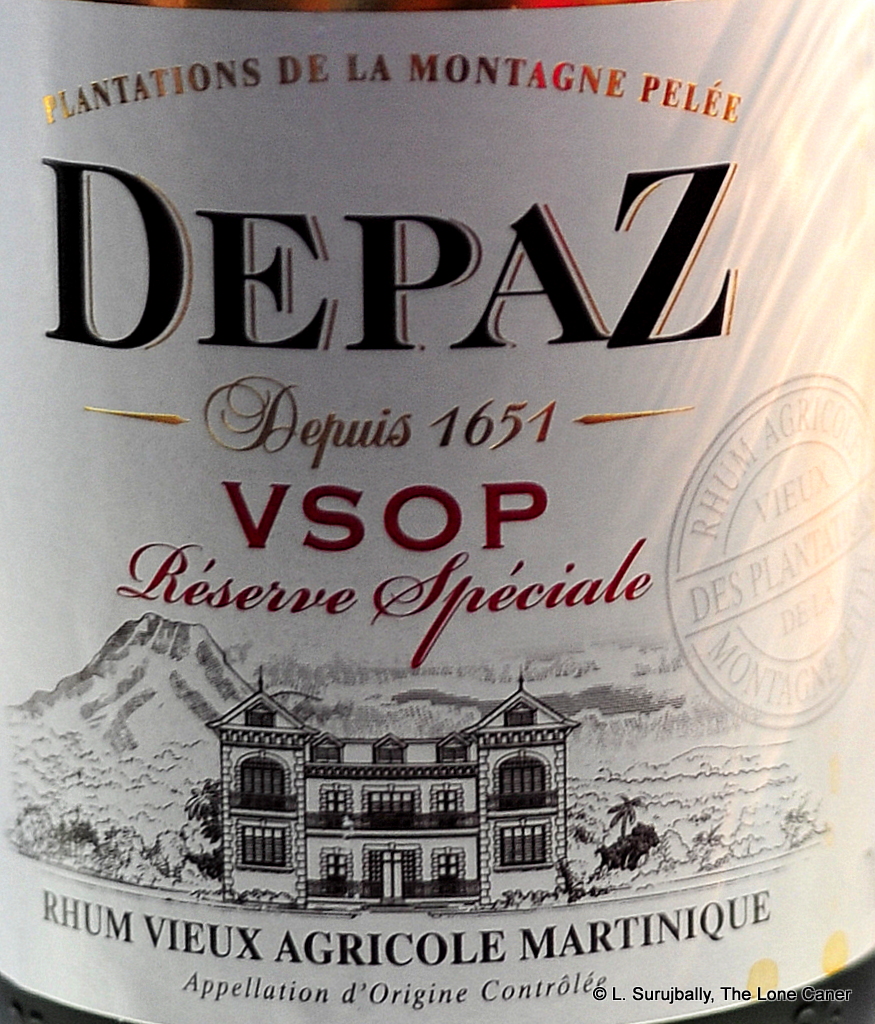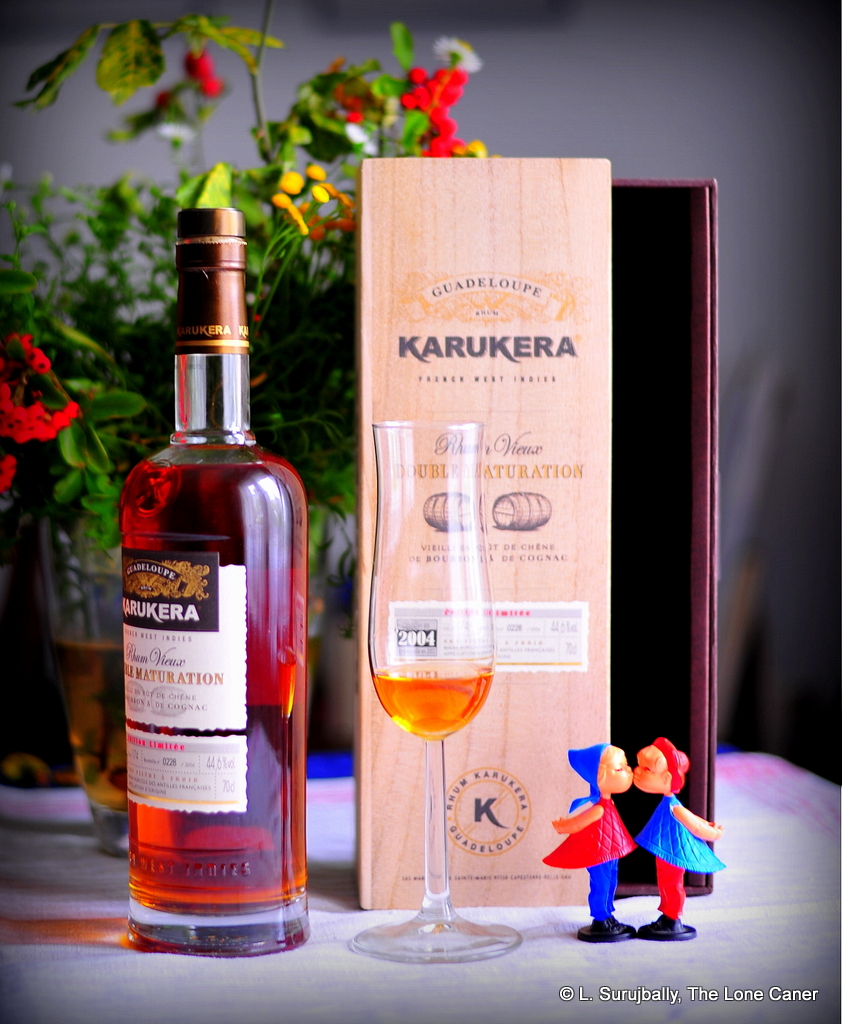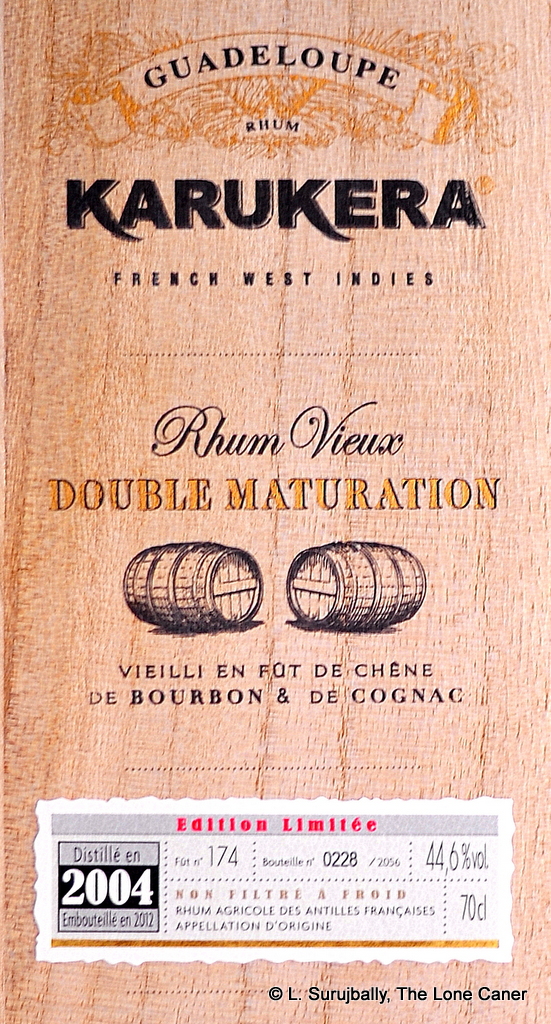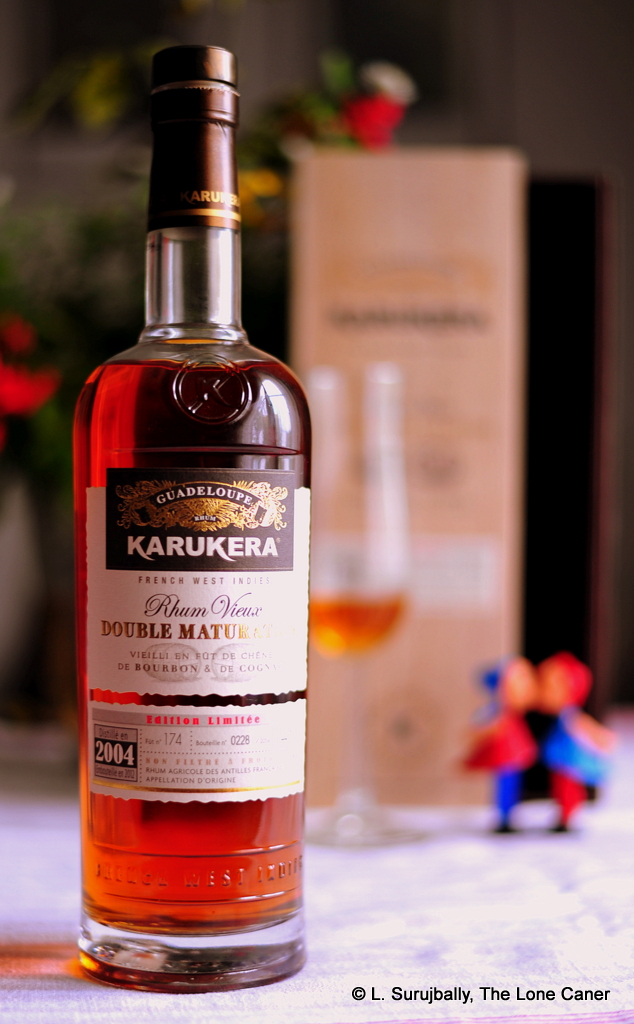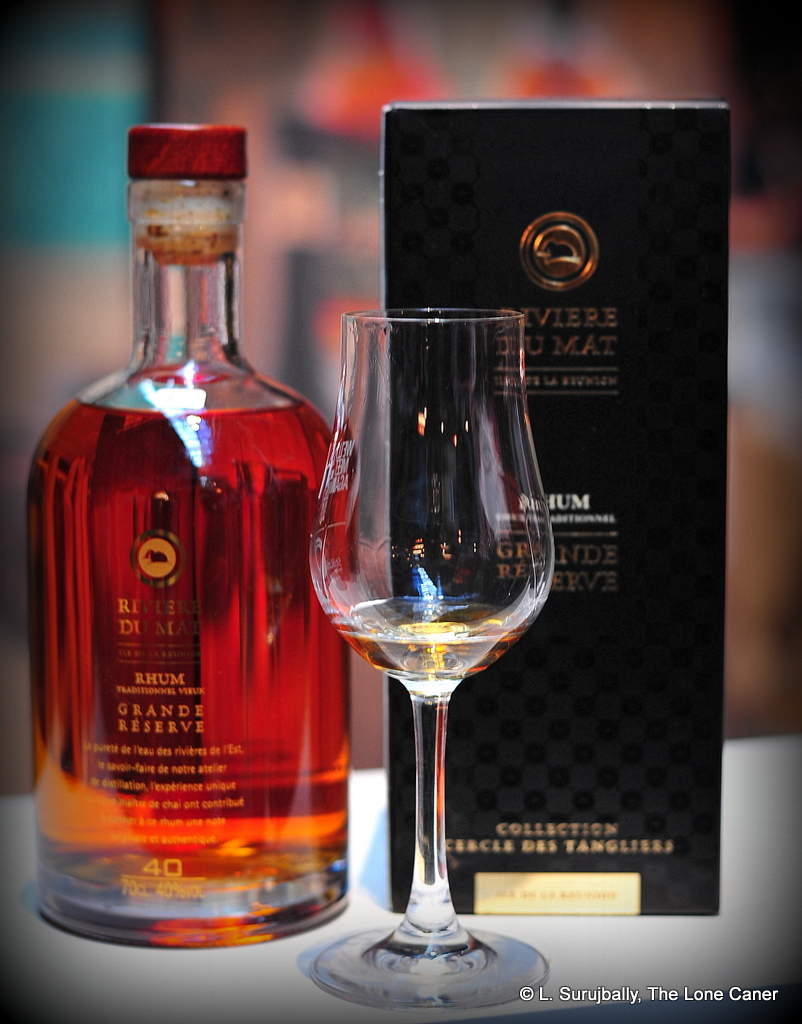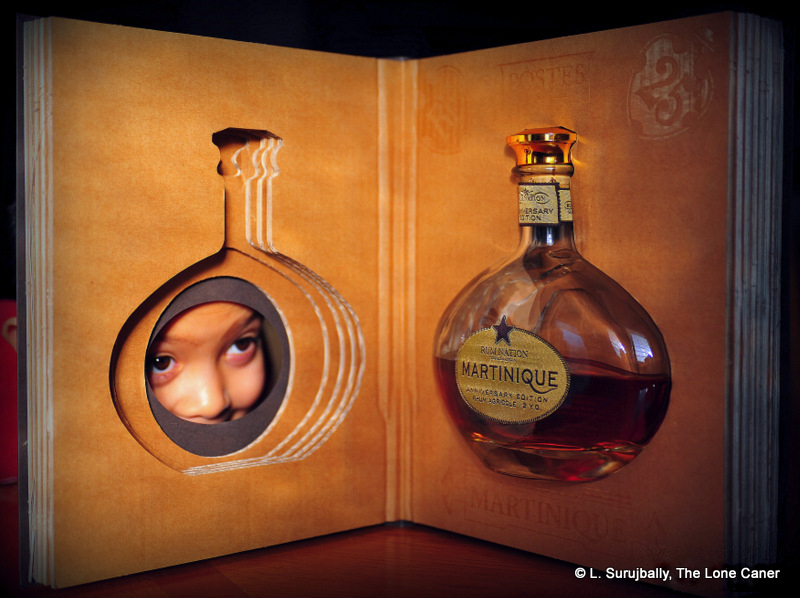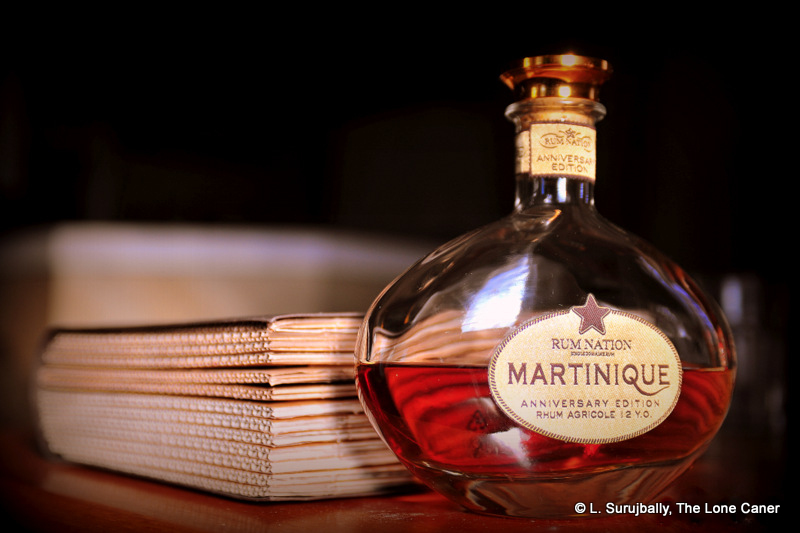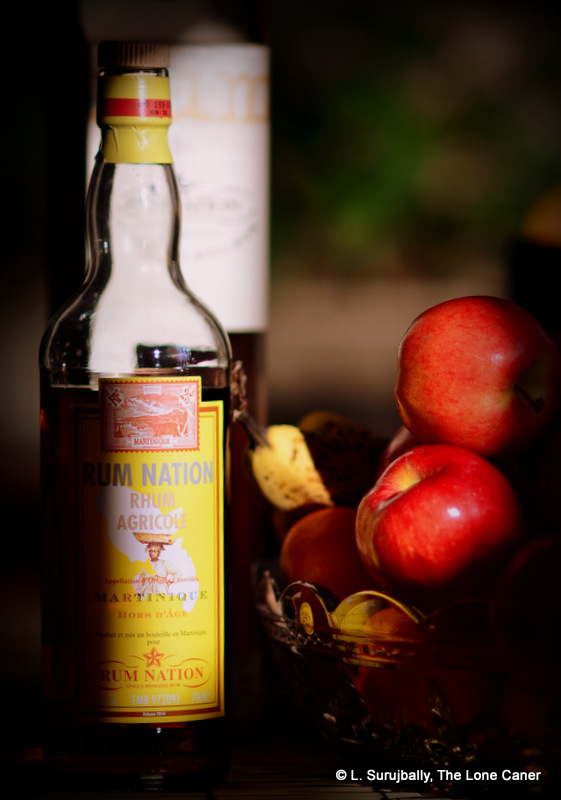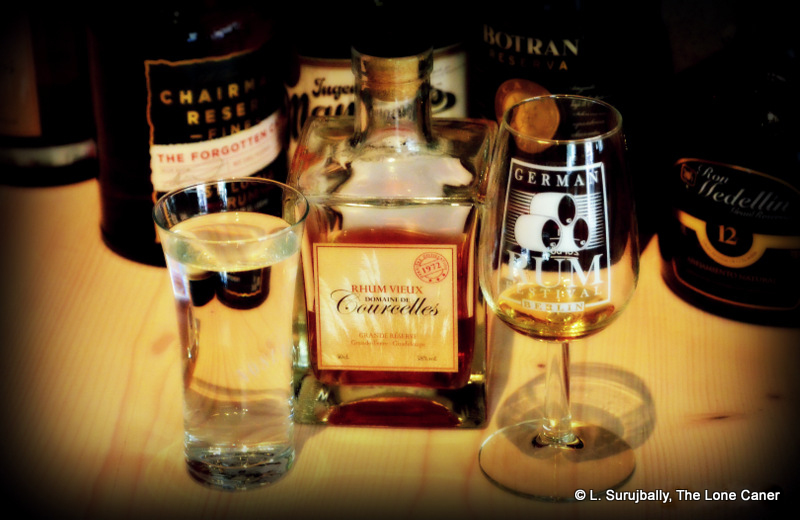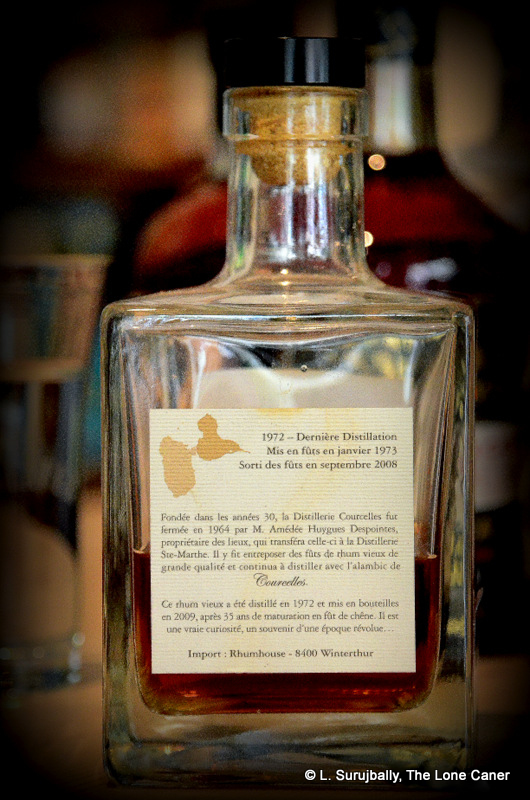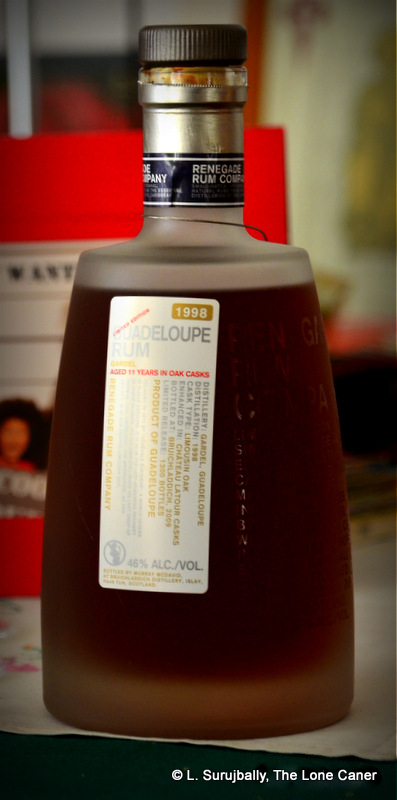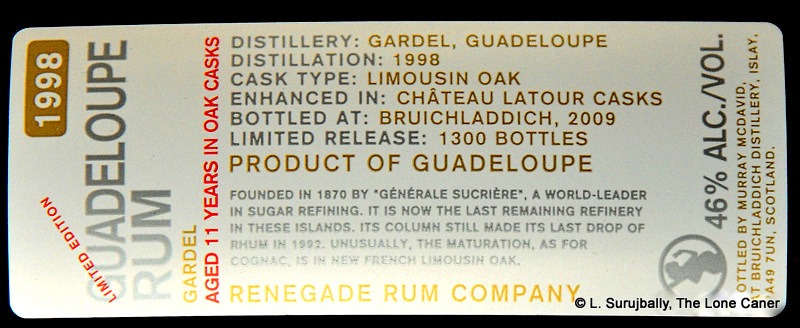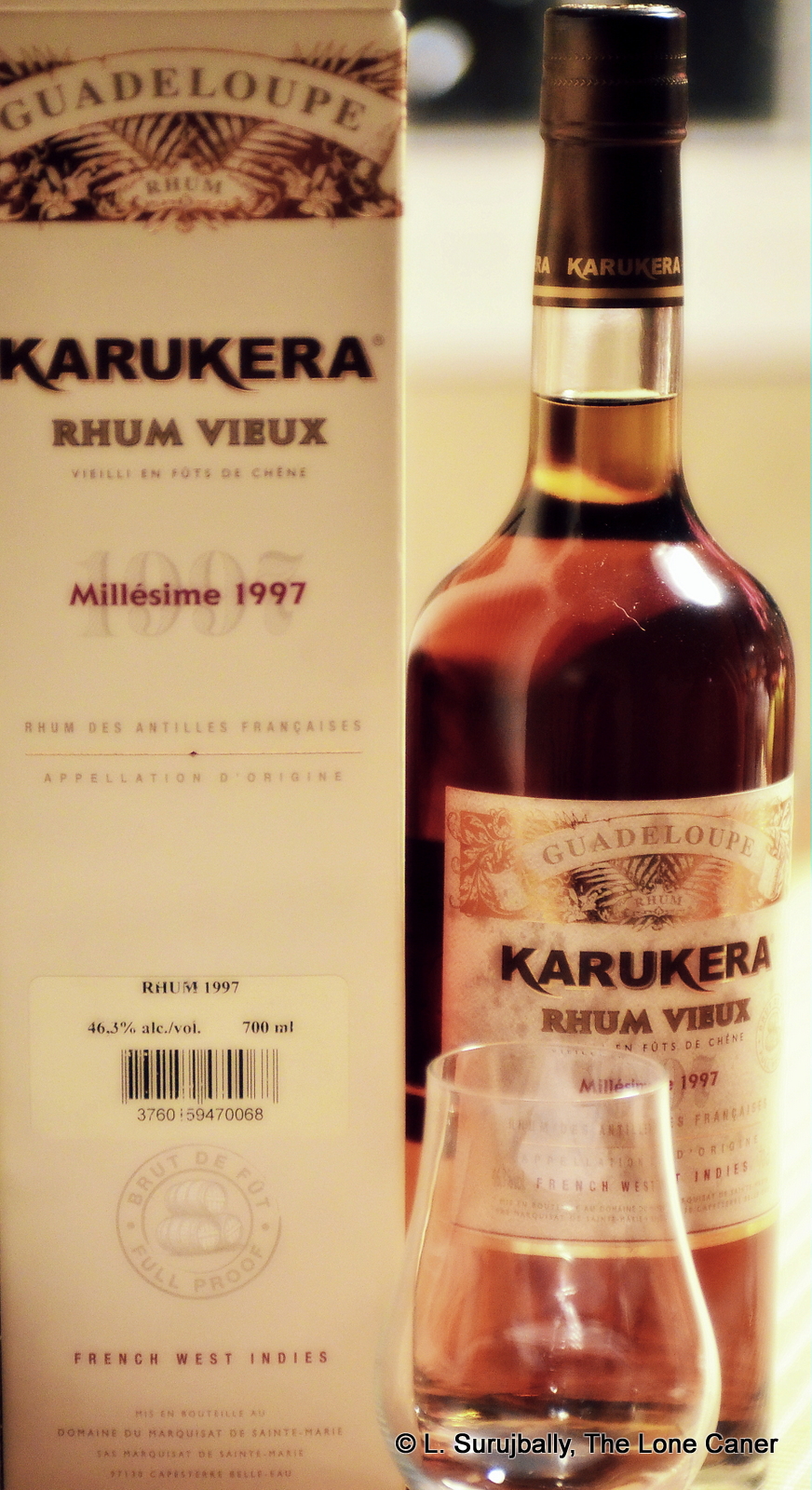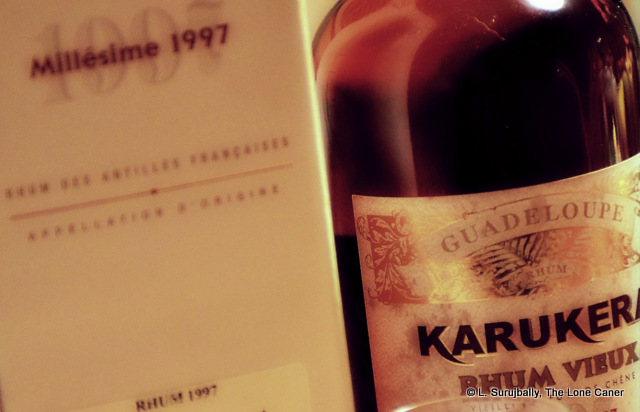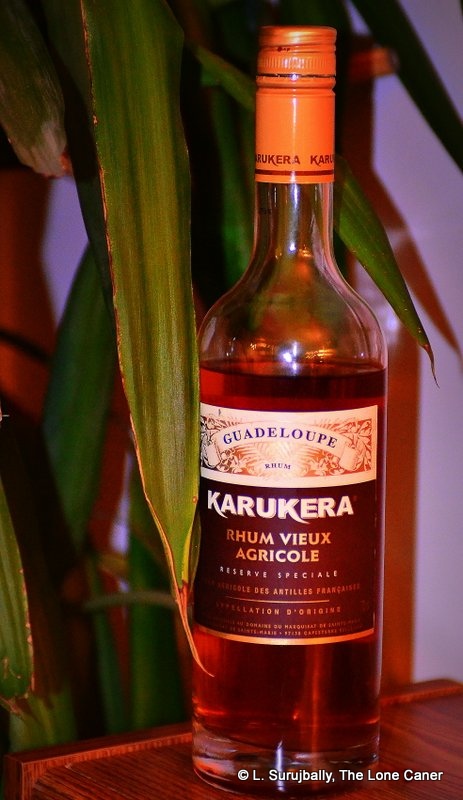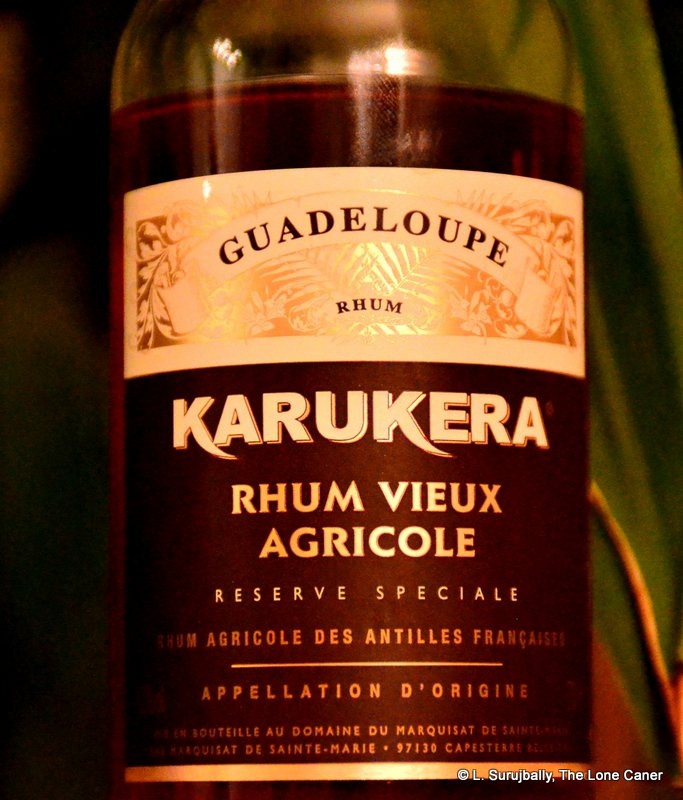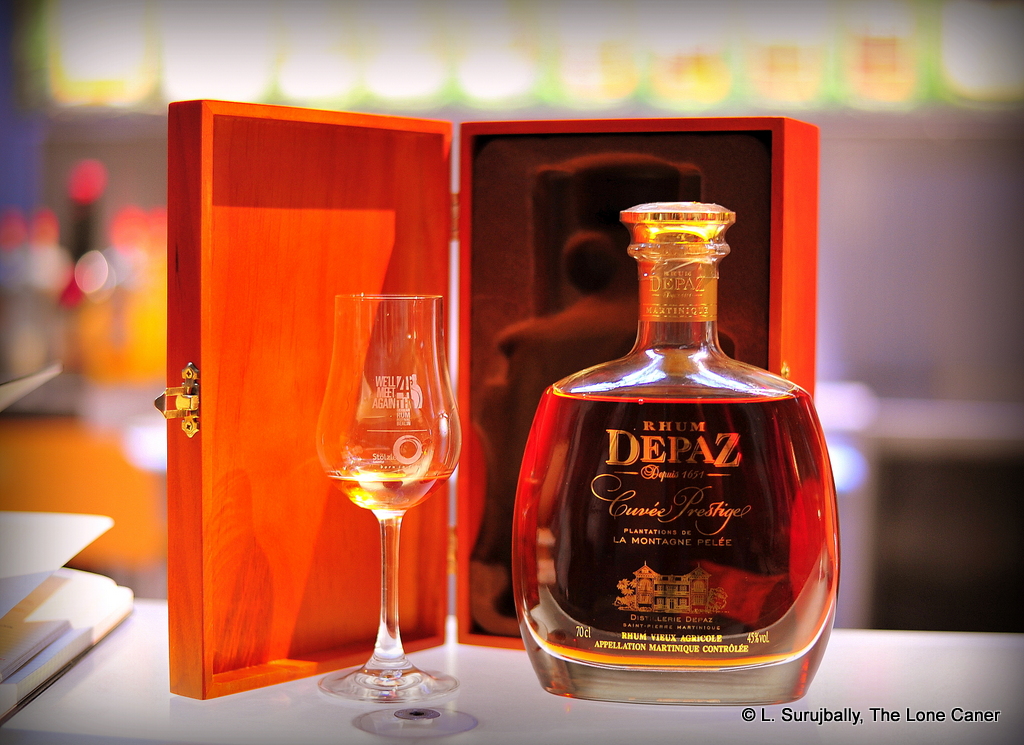
Clean, clear, dry and old, with a lackluster finish that detracts from the excellent front end.
When I reviewed the Depaz Reserve Speciale a while back, I thought that the flavours seemed a shade sharp, too vague, and departed the scene with all the hurry of a street cur at which you threw a rock…or something to that effect. Most of these issues were absent from the Cuvée Prestige, which was a better rhum in almost every way. It is a blend of rhums aged between six and nine years, has a lovely outfit, and probably the top-of-the-line product from Depaz. I hesitate to recommend it at the higher price points I’ve seen, but must concede that I think it’s one of the better agricoles out there (bar the finish), and for those with deep pockets (or who can ferret out a more economical buy), it may be worth that kind of outlay…assuming their tastes bend in that direction.
Points should absolutely be given for the packaging (oh come on, lie to me and say you never bought a bottle of something purely on the way it looks). The carafe-style bottle with gold etching (it shows the “castle” of Depaz and its date of founding, 1651) was surmounted with a gold-coloured cap and thick cork, and came in a wooden box with metal snaps, the design of which mirrored the bottle etching. It all looked very impressive, which it was: it just exuded an air of expensive Savile Row suits. As I’ve remarked before, when you’re at this price range, you’re absolutely within your rights to ask for some spiff on the wrapping, otherwise what are you spoiling yourself for? Who can you show off to? An unadorned barroom bottle can contain the elixir of the gods, sure, but who’d ever believe it does until they shell out the money, and who’d take the chance?
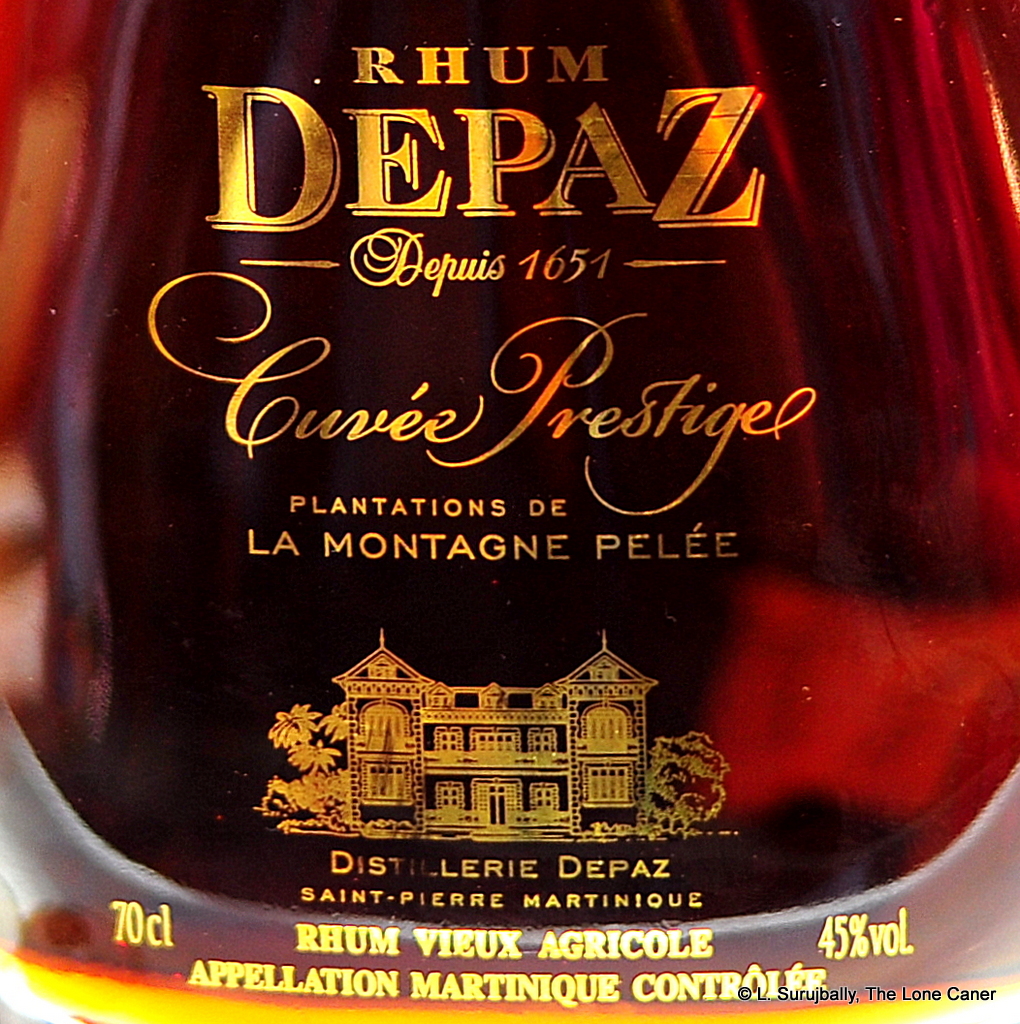
Anyway, the Cuvée Prestige is an AOC agricole from Martinique, made from sugar cane juice rather than molasses, grown on the Depaz plantation at the base of Mount Pelee (which nearly ruined the joint back in 1902 when it last woke up and belched). As with other Martinique rhums, it is terroire specific, and since Depaz is located right close by La Montagne with both volcanic soil and varying weather, some of its distinctive profile can certainly be attributed to those factors. The initial scents of this 45%, gold brown rhum certainly pointed in this direction. Initially very clean and dry, the vegetal green-grass aromas were to be expected, and did not disappoint – the rhum was extremely pungent, smooth and easy, even deep. It had some of the briny freshness of ocean spray. As it opened the scents moved to display more of that dry-ish, almost-salty profile – dates, figs, nuts and almonds, leather and toast, all nicely soft. No real fruity background to speak of here, just the shy promise of better to come
The taste on the palate did not take any sudden left turns or quick swerves. It retained cleanliness and smoothness, which were endearing characteristics – I have to be honest, the medium bodied rhum had the smooth and relentless flow of a slow tidal wave of double cream. And it also continued to display the warmth and aridity of the nose. It hinted at sea-salt and sawdust, still more nuts, nutmeg, hazelnut and almonds. Some caramel, cigar smoke, sandalwood. It almost felt like one of Renegade’s rums, like, oh, the Guadeloupe 1998 11 year old; also the Cuba 11 Year Old, or even (shudder) the Coruba 12 year old. Letting it stand, and adding some water finally coaxed out the flavours I was hoping to have – figs, dates, some light vanilla and overripe black grapes, all bound together by the smell of crushed sugar cane stalks still weeping juice and drying in the hot sun. The finish was a weak point for me – smoky and sharper than it should have been (it lasted a good while, I can’t deny that), with not much going on aside from some closing notes of vanilla, and salted peanut butter.
It had a good mouthfeel, nice body, good tastes around the edges, and the nose was heavenly, but I think that here, the slight dominance of the non-sweet brininess made the product falter as an overall experience for me (when related to the price – had it been cheaper, I dunno, I might have been more lenient). It’s definitely better than the Reserve Speciale, and I could see its overall quality, feel its texture, and acknowledge that in my scoring. But I’m afraid it’s not my cup of tea, really, not entirely. Therefore, dear buyer, if money is an issue, it’s a rum that you might wish to taste first (if possible) and checking it fits in with your personal profile preferences, before shelling out. It’s a very good rum in its own way, and just because that way meanders apart from my own path doesn’t invalidate the product on its own merits.
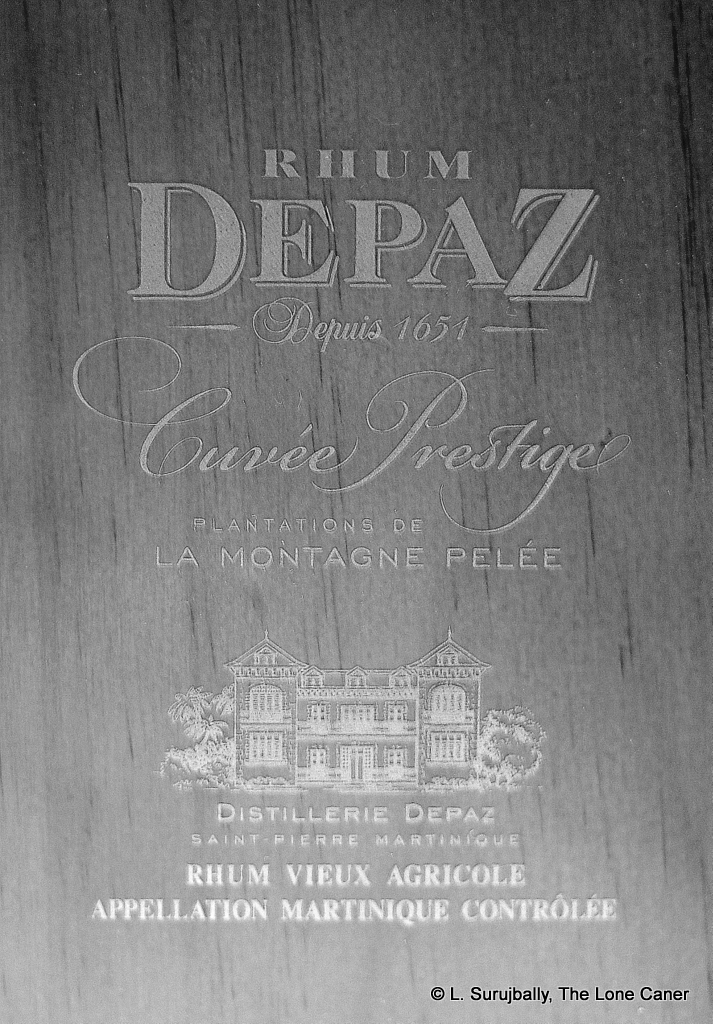
(#198. 86.5/100)
Other notes:
- Online cost shows wild variation. I’ve seen everything from €80 to €250, with one reviewer remarking that it can be had for substantially less on the island itself. While I’m not privy to the sometimes obscure pricing mechanisms of web stores, I don’t think I’d shell out more than €100 for this one, both for the cool looks and lovely taste, and also because of the failed backend. It would have to be a hell of a lot rarer and more in line with the personal preferences I have, to convince me to part with that much of my hard earned balles.
- Nowadays it’s owned by Bardinet (who also make the Negrita line of rums I’ve never tried), but who, interestingly, make no mention of Depaz at all on their (poorly designed) site. There are days I wonder how advertising is really done for products this good: maybe that’s what we reviewers are here for. After all, if we shell out some cash to buy the thing and like it (which is a chance the makers seem to think is worth taking), then they don’t have to. I’ve made my peace with that situation a long time ago, but there’s no doubt I still feel a twinge of annoyance about it – we should not be seen as a free resource, to act as a substitute for their reluctance to advertise properly on their own account.

